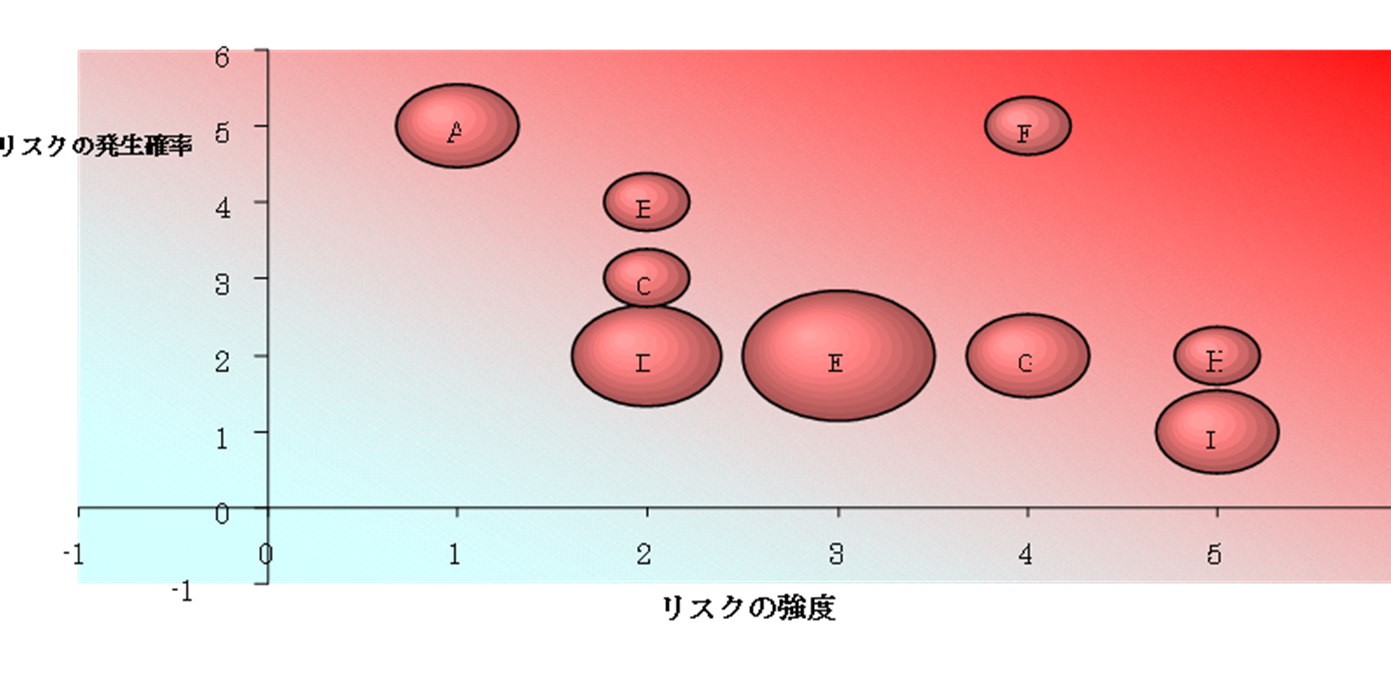キャプティブ 2022.07.10
CA38 キャプティブは、なぜ企業に必要なのか
目次
当コラム内の文章の無断転載・引用・複製を固く禁じます。
For those who prefer to read this column in English, the Japanese text is followed by a British English translation, so please scroll down to the bottom of the Japanese text.
「日本には、世界的にも評価が高く、規模の大きい、3つの損害保険グループがあるのに、なぜキャプティブは必要なのですか?日本の損害保険会社だけではダメなのですか?」という質問を受けたことがある。
「もっともなご質問ですね」とお答えした後、損害保険業界が抱える課題について以下のように3点に別けてご説明した。

1.保険料の構成
どこの国でも損害保険会社は自らが売りたい保険を売るものです。「収益を追求しなければいけない企業の宿命」だからです。しかし、「損害保険会社が売りたい保険が、お客様が望んでいる保険であるという保証」はありません。むしろその逆のことも多いのではないでしょうか。理由は、お客様は「安い保険料」で「高額の補償」を望みますが、これは損害保険会社の企業目的とは二律背反する要望だからです。
補償金額だけでなく補償内容も、お客様は「より広く」、損害保険会社は「より狭く」と考えます。お客様からいただく保険料のうちお客様にお支払いする保険金の額が60%を超えると、損害保険会社は赤字になり長期に事業を継続することはできなくなります。
そのような不健全な経営を続けることによって破綻すれば非常に多くのお客様に大きなご迷惑をお掛けすることになる点から、日本では、戦後まもなくインフレが高進していた頃、1948年、「損害保険料率算定団体に関する法律」が公布、損害保険料率算定会が設立され、この「業界全体で決められた料率を基準」にして保険料を決めることになりました。
2002年には、「損害保険料率算出機構」と名称も新たにして、火災保険、自動車保険、自賠責保険、傷害保険等では、保険料の基礎となる「純保険料率」を決め、各保険会社はその保険料率を基準にして、その上に保険事業を行なうために必要な事業費等を「付加保険料率」として乗せて、「適用保険料率」を算出して、お客様に提示する保険料を決めているのです。
2.キャプティブの必要性
このように保険料が決められると、一見「お客さまにとっては公平性のあるシステム」のように映りますが、一方、「事故を起こさない努力を最大限しているお客様」と「そうではないお客様」、つまり「事故が起きる可能性が高い=リスクが高い」集団と「事故が起きる可能性が低い=リスクが低い」集団を一括りにして全く同じ保険料を提供することになり、「リスクマネジメント意識が高く、事故を起こすまいと努力している」集団にとっては不合理な保険料構成になっていると言えます。
これが「個人」のレベルでなくリスク規模が大きい「企業」となるとその影響は非常に大きなものとなります。
「高いリスクマネジメント意識によって損害の発生を軽減化する努力をしている企業」が「そうではない企業が発生させた損害によって保険会社が支払う保険金に集められた保険料が費消される事態」になるということです。
「当社は、常日頃、高いリスクマネジメント意識を持ち事業を展開している」と考えている企業にとっては、不合理なことであると言えるでしょう。また、「自らが発生させる損害率を明確に保険料に反映させた、当社にとって妥当と考えられる保険料で保険を付保していきたい」と考える企業にとっては、「なぜ」という強い疑問が起きることでしょう。
こういう発想のもと生まれたのが、自社専用保険会社、「キャプティブ」のプログラムなのです。
3.リスクマネジメントが産んだキャプティブ
リスクマネジメントは、本来、企業の事業目的の達成を妨げる阻害要因や不確実性を排除・制限するための企業戦略ですが、その概念が日本に導入された理由が、「損害保険会社が自らの保険収益を改善させるために保険事故を減らすために顧客に勧奨した」ということであったため、日本では「リスクマネジメント=損害防止軽減活動」と理解されてきました。
しかし、リスクマネジメントは、単なる「損害防止軽減活動」ではありません。企業、団体、組織が抱える多くのリスクを洗出し、リスクの大きさを算定・分析して、受容可能か否かを評価、そのうえでリスクごとに「リスク対応策」の策定・実施へと進め、更にその後も定期的にPDCAサイクルによって着実にリスク対応への改善を図っていくものです。
そのためには、それらのリスクの大きさを明確に把握できる仕組みを「自社内」につくり「リスクの大きさ、頻度」等を把握、更にそれらのリスクに対して「保険を含めてどのような対応策を取れるか、取っているか」を定期的に明確にしておくことが重要です。
「保険を損害保険会社に掛ける行為」は、「自社からリスクを外に出しているため、リスクヘッジ(リスクの軽減・削除)」と理解され「リスクを消し去ることができた」と一般には考えられていますが、「保険証券にも、損害保険会社が引受けないリスクが『免責』として明確に記されている」事実が存在します、また「保険金額」という「補償の金額上の制限」も存在するからです。
こういった「保険を掛けても単純に消えない企業経営上のリスク」を含めて、自社の内包する、また遭遇する可能性のあるリスクを自社内で明確かつ継続的に把握する仕組みがキャプティブ(自社専用保険会社)を中心とした「キャプティブ・プログラム」なのです。だからグローバル・リンクでは、このキャプティブ・プログラムを企業戦略に解(ソリューション)を与えることになるという点から「ソリューション・キャプティブ®」と呼んでいるのです。
「なるほど、ということは、損害保険分野の損害率の良い企業にとっては、必須の企業戦略ですね」とお答えが帰ってきたところから十分ご納得戴けたようであった。

今回のまとめ
これまでのコラムに於いては、「地震保険キャプティブ」を中心に記してきたが、今後は上記のようなお客様との会話のなかで得た、「キャプティブを検討されている企業」にとって有用だと考える質疑等も記していきたい。
日本損害保険協会の行動規範には、「安心かつ安全で持続可能な社会の実現と、経済および国民生活の安定と向上に資する相互扶助制度を円滑に運営することが、損害保険事業の社会的使命として求められている」とある。
損害保険会社はその社会的使命として、「ある特定の一社にのみ補償を提供することではなく、日本国内の個人、企業に遍く広く補償を提供すること」が求められているということであり、「一社のみの要望に応える存在」にはなれないということである。だからこそ、「一社のみの要望に応えるキャプティブ」が果たす役割は非常に大きいと言える。
その上、再保険手配のプロフェッショナルと組み、海外の保険市場からキャプティブから再保険を廉価で確保できれば、日本の元受保険会社と海外の保険会社との保険料の差額はキャプティブの利益となる。
そうやって出来上がる、グローバル・リンクの「ソリューション・キャプティブ®」とは、「世界最大級の再保険会社と日本の最大級の保険会社(元受保険会社)がキャプティブを媒介として連携、一見不可能と思えるような補償の提供を廉価で可能にするプログラム」と言える。
「第7波到来」とマスコミは喧しいが、ワクチン接種によって感染者は増えているが重症化は防げているようである。コロナ禍の先が垣間見えるようになってきたいま、何時起こってもおかしくない巨大地震リスク、首都圏直下大地震、南海トラフ巨大地震等に備えるため、「キャプティブの設立」を検討する良い機会ではないだろうか。
執筆・翻訳者:羽谷 信一郎
English Translation
Captive (CA) 38 – Why do companies need captives?
“why do we need a captive when Japan has three non-life insurance groups that are globally respected and large in size? Why not just a Japanese non-life insurer?” I have been asked the question.
After answering that it was a fair question, I explained the challenges facing the non-life insurance industry in three areas, as follows.
Everywhere, non-life insurance companies sell the insurance they want to sell. This is because ” it is the fate of a company that must pursue profit”. However, there is no “guarantee that the insurance that non-life insurance companies want to sell is the insurance that customers want”. In fact, the opposite is often true. The reason is that customers want “high coverage” at ”low premiums”, but this is a demand that is in direct contradiction to the corporate objectives of non-life insurance companies.
In terms of coverage as well as the amount of coverage, clients want ” broader coverage”, while non-life insurance companies want “narrower coverage”. If the amount of claims paid to clients exceeds 60% of the premiums received from clients, the non-life insurance company will lose money and will not be able to continue its business in the long term.
In Japan, when inflation was rising soon after the war, the Law on Non-Life Insurance Premium Rate Calculation Bodies was promulgated in 1948, and the Non-Life Insurance Premium Rate Calculation Society was established to ensure that products in the field of personal insurance purchased by individuals were not sold to any third party. The Law on Non-Life Insurance Premium Rate Calculation Bodies was promulgated in 1948, and the Non-Life Insurance Premium Rate Calculation Bodies were established to determine premiums for individual insurance products purchased by individuals “based on industry-wide rates”.
In 2002, the organisation was given a new name, the Non-Life Insurance Premium Rate Calculation Organisation, and for insurance products such as fire insurance, motor insurance, liability insurance and personal accident insurance, a “net premium rate” is determined as the basis for premiums. Each insurance company uses the net premium rate as a basis for determining the premiums to be offered to clients, and then adds the business costs required to conduct the insurance business as an “additional premium rate”.
2. Necessity of captives
However, there is a difference in risk management awareness between clients who are making maximum efforts to avoid accidents and those who are not, and a difference between the ” group with high accident potential = high risk ” and the ” group with low accident potential = low risk “. This is an unreasonable premium structure for a group that has a high awareness of risk management and is making efforts to avoid causing accidents.
The impact of this is not just on the level of individuals, but also on companies with a large scale of risk, is very significant.
The situation is that “companies that are making efforts to reduce the occurrence of losses through a high level of risk management awareness” are “in a situation where the premiums collected by the insurance company are being spent on insurance claims paid by companies that are not making such efforts”.
This is unreasonable for a company that believes that “we always develop our business with a high level of risk management awareness”. It also raises the question of ” why ” for companies that want to insure at premiums that clearly reflect the loss ratio they incur and that are considered reasonable for their company.
This is the idea that gave birth to the Captive programme, an insurance company dedicated to the company.
3. captives spawned by risk management
Risk management is essentially a corporate strategy to eliminate or limit impediments and uncertainties that prevent companies from achieving their business objectives, but the concept was introduced to Japan because “non-life insurance companies encouraged their clients to reduce insurance accidents in order to improve their own insurance profits”. In Japan, risk management has been understood as ” risk management = loss prevention and mitigation activities”.
However, risk management is more than just ” loss prevention and mitigation activities”. It involves identifying the many risks faced by companies, groups and organisations, calculating and analysing the magnitude of the risks, evaluating whether they are acceptable or not, formulating and implementing ” risk response measures” for each risk, and then making steady improvements to the risk response through a regular PDCA cycle.
To this end, it is important to establish a system within the company to clearly grasp the size and frequency of risks, and to regularly clarify what countermeasures, including insurance, can be taken and are being taken to deal with these risks.
Although the act of “insuring with a non-life insurance company” is generally understood as “hedging (reducing or eliminating risk) because the risk is removed from the company” and is considered to have “eliminated the risk”, the fact remains that, however, the insurance policy also clearly states the risks that the non-life insurance company does not accept as “deductible'”, and there is also a “limit on the amount of compensation” called the “amount insured”.
The Captive Programme, centred on captives (insurance companies dedicated to the company), is a mechanism for companies to clearly and continuously identify the risks they contain and may encounter, including these ” risks in corporate management that do not simply disappear when insured”. This is why Global Link calls this captive programme a ” Solution Captive® “, as it provides a solution to the company’s corporate strategy.
The answer to the question, “I see, so this is an essential corporate strategy for companies with good loss ratios in the non-life insurance sector”, seemed to be enough to convince them.
Summary of this issue
In my previous columns, I have focused on earthquake insurance captives, but in the future I would like to write about questions and answers that I think are useful for companies that are considering captives, based on conversations with clients like this one.
The Code of Conduct of the General Insurance Association of Japan states that the social mission of the non-life insurance business is to smoothly operate a mutual assistance system that contributes to the realisation of a secure, safe and sustainable society and to the stability and improvement of the economy and people’s lives.
Non-life insurance companies are required, as part of their social mission, to “provide compensation not only to one particular company, but to individuals and companies throughout Japan”, meaning that they cannot be “an entity that responds to the demands of only one company”. That is why the role of a ” captive that responds to the demands of only one company” is so important.
Moreover, if a captive is able to secure reinsurance from overseas insurance markets at a lower price by teaming up with reinsurance arrangement professionals, the difference in premiums between the Japanese primary insurer and the overseas insurer will be the captive’s profit.
Global Link’s Solution Captive® is a programme that enables the world’s largest reinsurers and Japan’s largest insurers (primary insurers) to work together through a captive to provide seemingly impossible coverage at a lower cost.
The media are clamouring for the arrival of the seventh wave, but vaccination seems to have prevented serious illnesses, although the number of people infected is increasing. Now that we have a glimpse of what lies ahead for the coronary disaster, it may be a good time to consider the establishment of a ” captive ” in order to prepare for the next major risk, such as a major earthquake directly under the Tokyo metropolitan area or a major earthquake in the Nankai Trough.
Author/translator: Shinichiro Hatani

